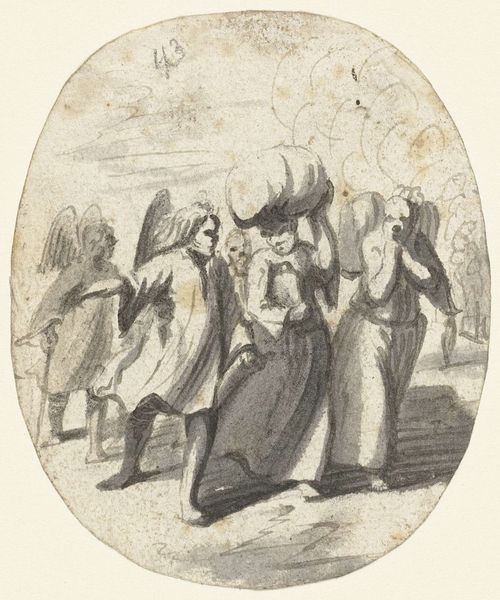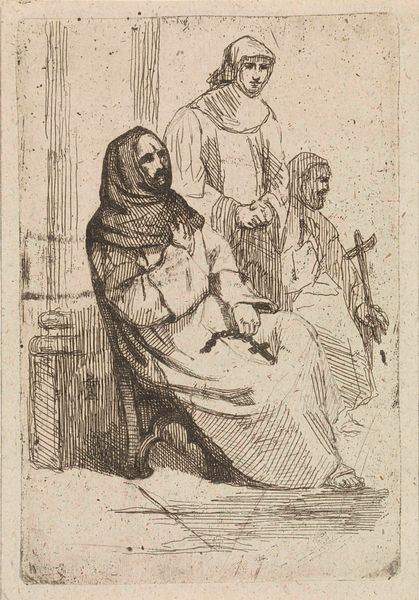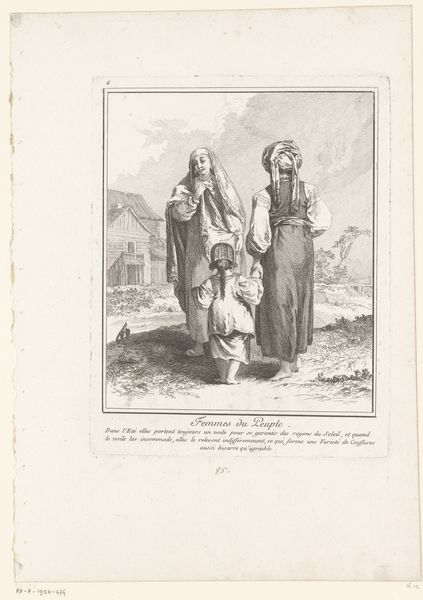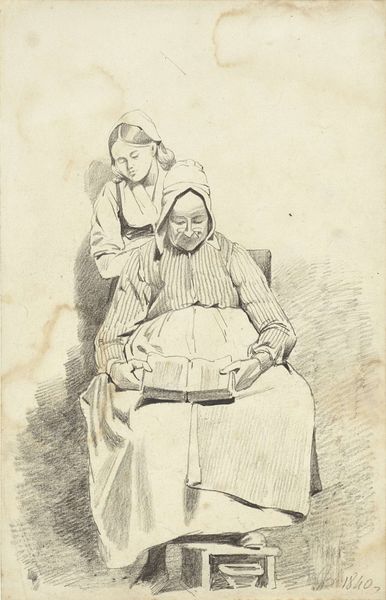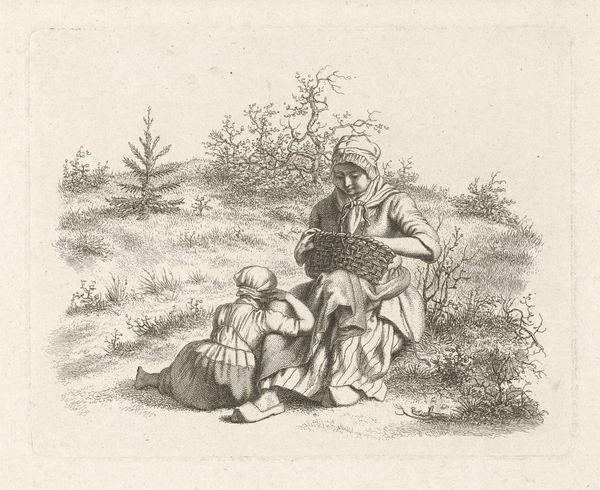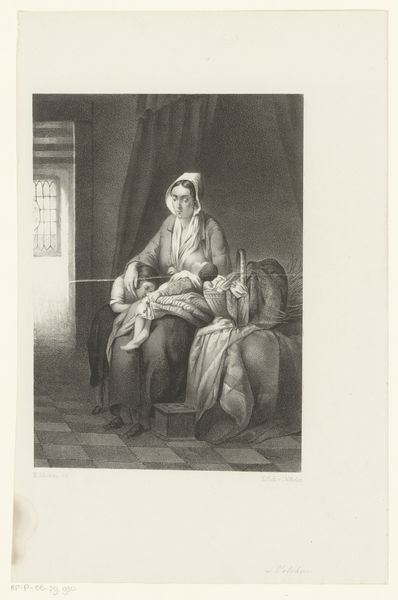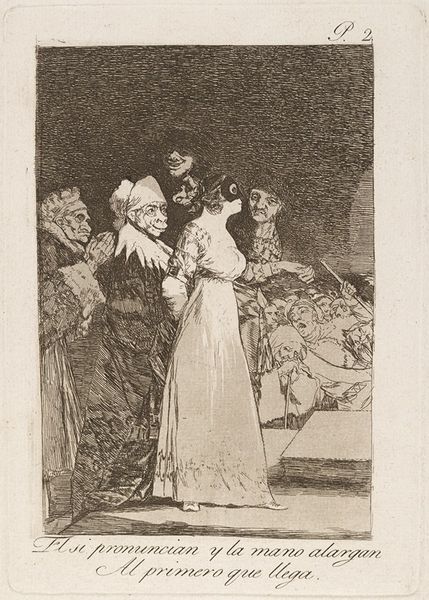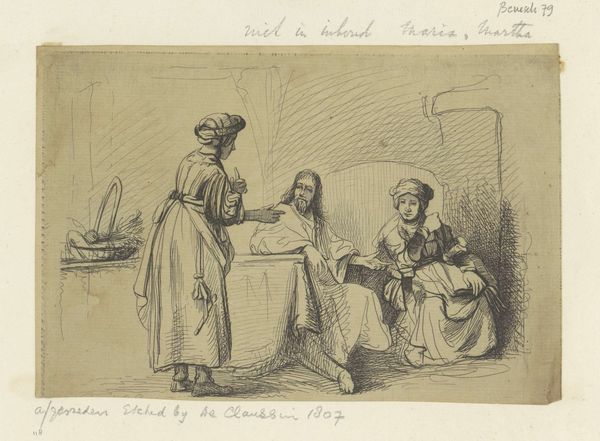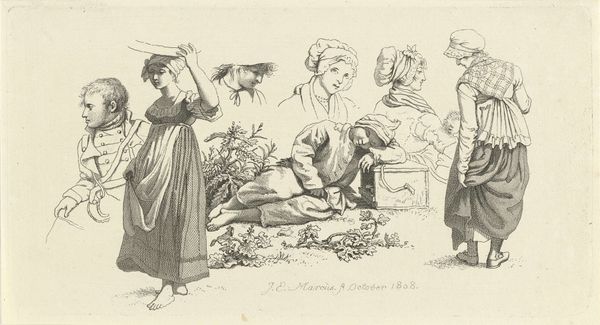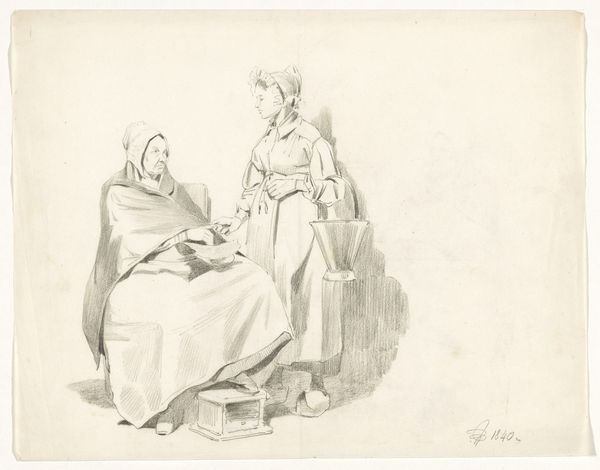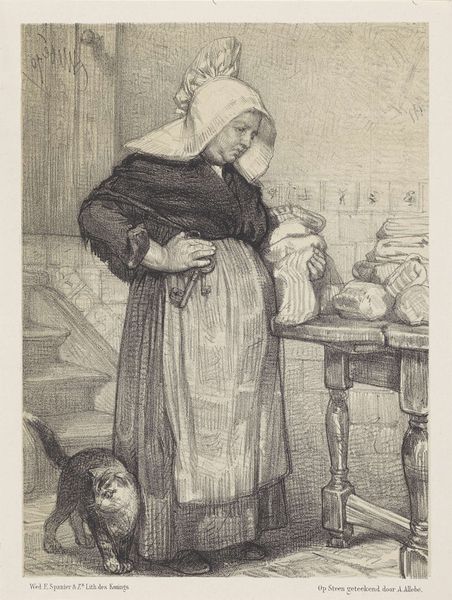
drawing, pencil
#
portrait
#
drawing
#
pencil sketch
#
pencil
#
genre-painting
#
realism
Dimensions: height 125 mm, width 221 mm
Copyright: Rijks Museum: Open Domain
Editor: This is "Studieblad met twee vrouwen en een kop," or Study Sheet with Two Women and a Head, a pencil drawing from 1808 by Jacob Ernst Marcus. I'm immediately struck by the figures' almost casual poses; they seem so lifelike and unstaged, which feels quite modern. What do you see in this piece? Curator: I see a reflection of shifting social dynamics within the art world. At the turn of the 19th century, there was a growing interest in depicting everyday life and the common person, reflecting a broader cultural shift towards valuing bourgeois experience. Before this period, high art focused almost exclusively on noble or religious subjects, and so art’s democratizing. Notice the subjects and the naturalistic poses as well. The question this piece raises is: What motivated artists, like Marcus, to turn their attention towards more quotidian subjects? Editor: So you're saying this wasn't just about aesthetics, but about a change in who was considered worthy of representation? Curator: Exactly. This shift reflects the rise of a new middle class and the weakening power of the aristocracy. Patronage was evolving and portraits and genre paintings had increasing commercial appeal beyond the established elites, so what stories resonated with new buyers? Editor: That's fascinating. I had focused on the apparent realism, but not considered the socio-political factors that might have driven the artist to depict ordinary people in such a way. It seems like an intentional effort to make art more accessible. Curator: Precisely. Think about the role that exhibitions and public art spaces played in circulating these images, fostering dialogue, and ultimately, shaping public opinion about class and identity in this time. How would art consumers of the day feel about being invited into the world of commoners and, maybe even recognizing themselves? Editor: This has really shifted my perception. I'm now thinking about the broader cultural implications, the social forces at play. Thanks! Curator: Likewise. Examining art through this historical lens helps reveal the narratives it tells, about power, society, and our ever-evolving relationship with images.
Comments
No comments
Be the first to comment and join the conversation on the ultimate creative platform.

